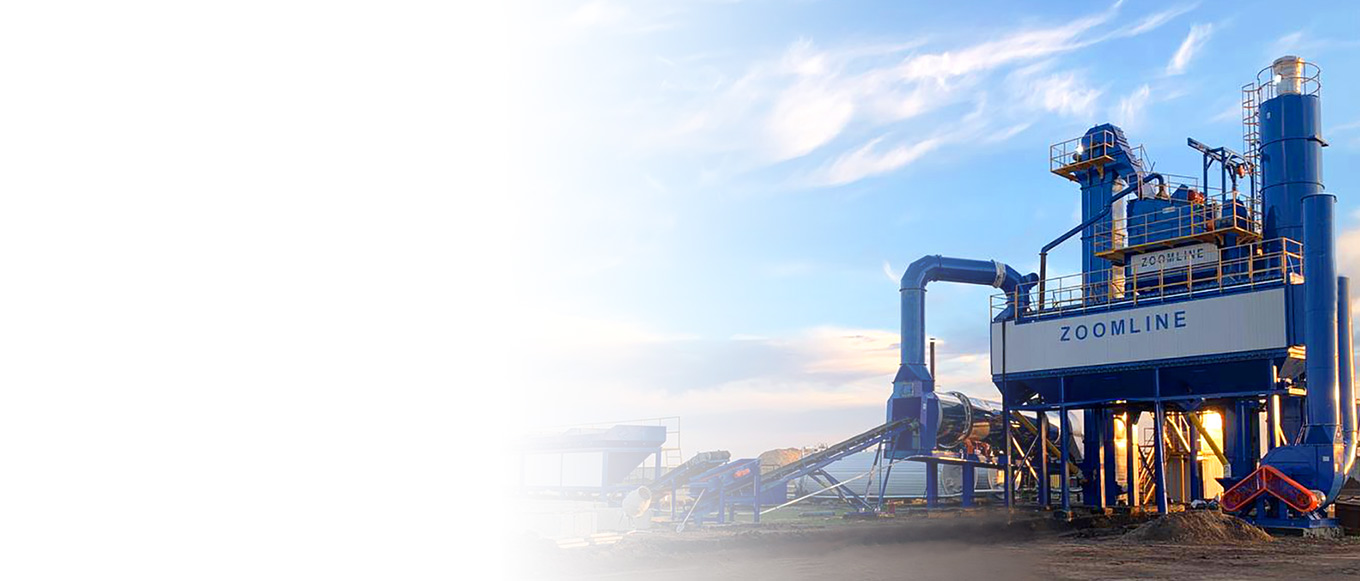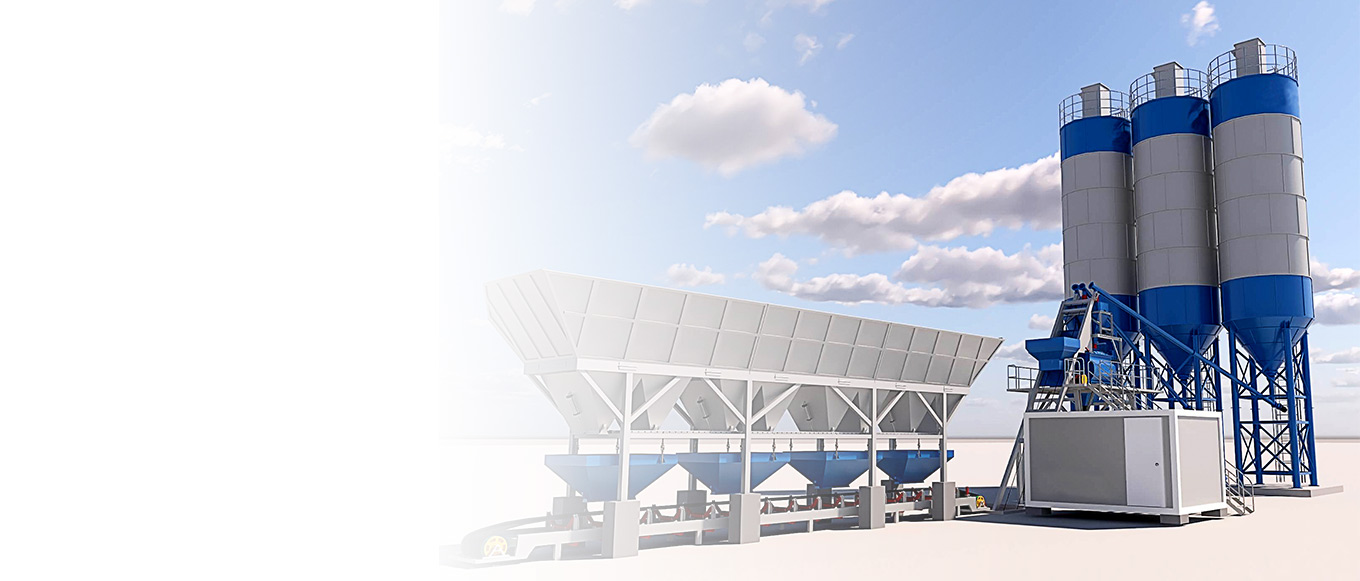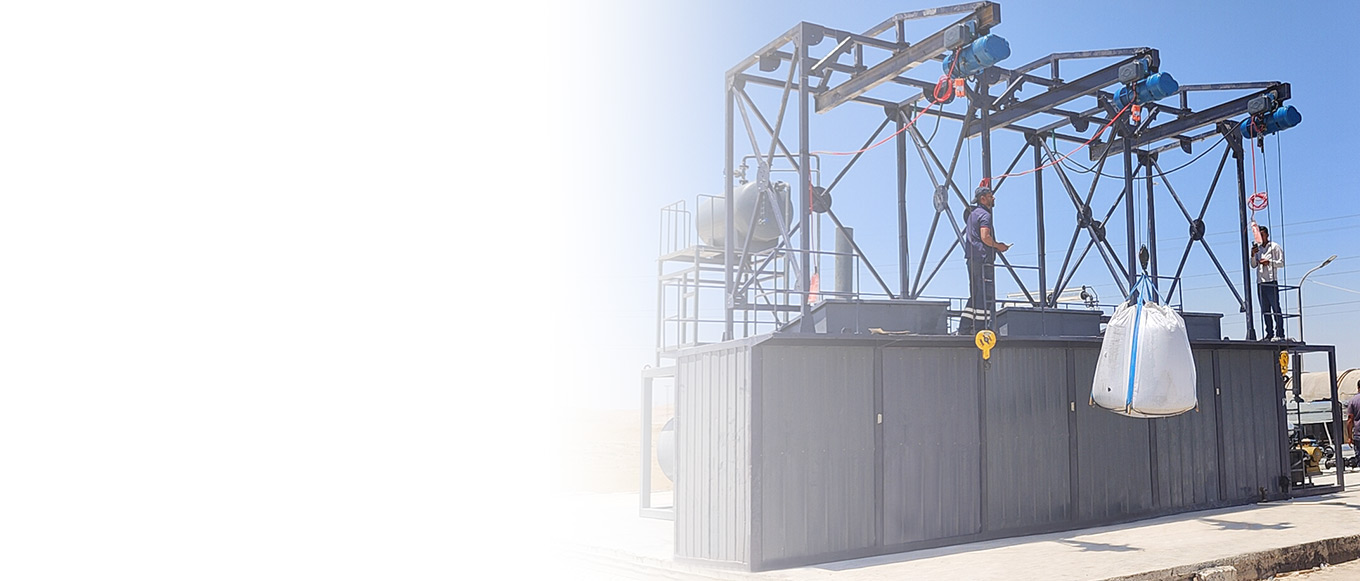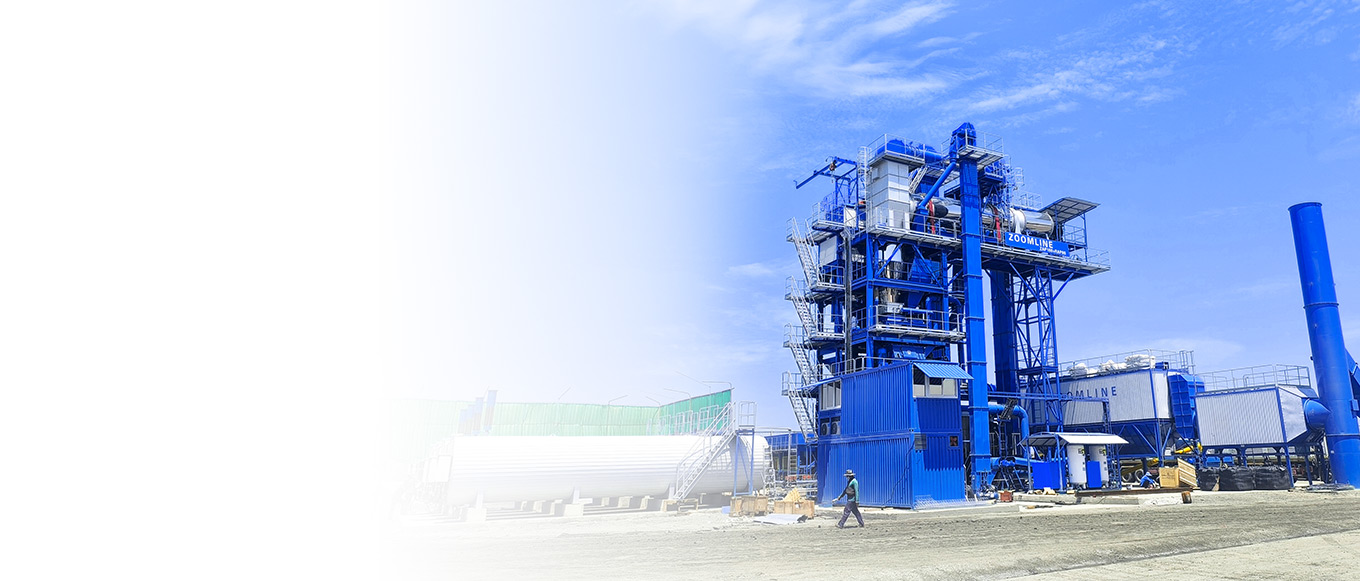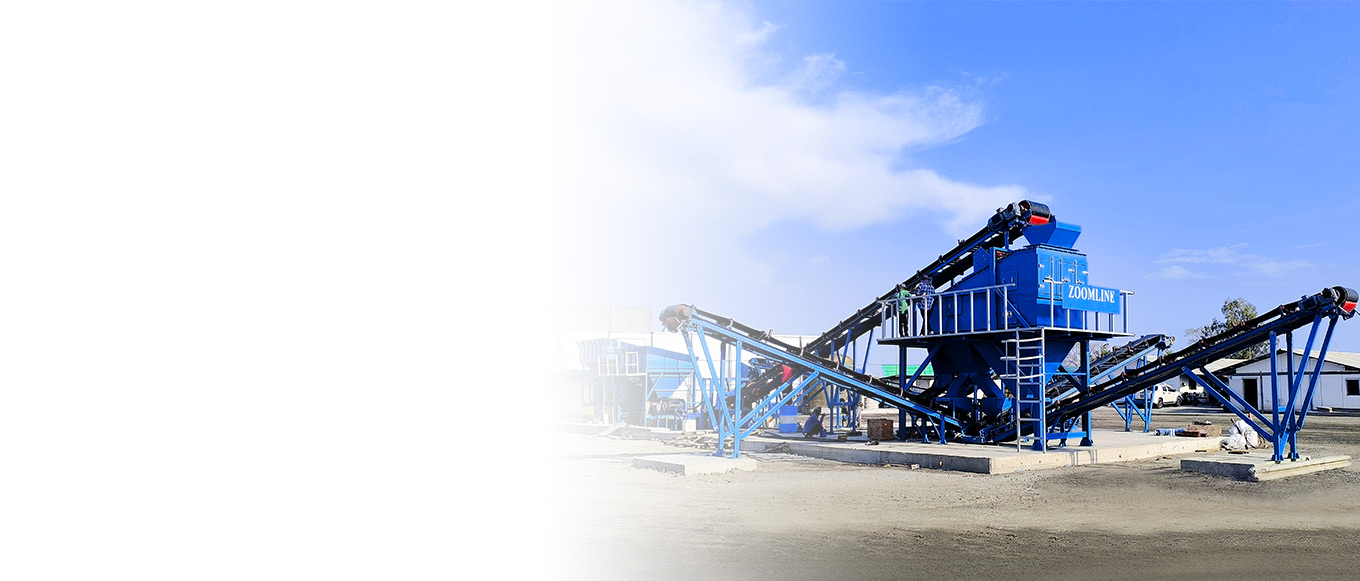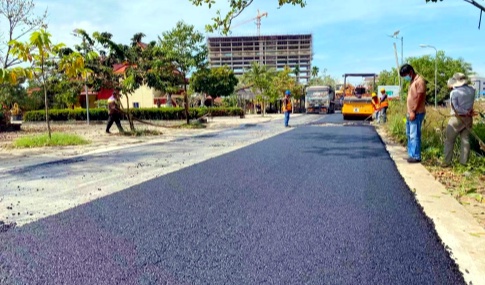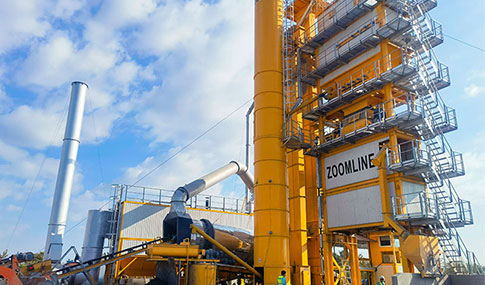In asphalt concrete pavement construction, the selection of a site for an asphalt mixing plant is of great significance. It has a significant impact on construction quality and costs, and different site locations will result in varying construction quality and costs. Additionally, the site location not only determines the construction progress of the asphalt pavement but also significantly influences the quality of the asphalt.
The Importance of Asphalt Plant Site Selection
Different site locations directly affect construction quality. For example, if the site is too far from the raw material source, raw materials may be damaged or degraded during transportation, thereby affecting the quality of asphalt concrete. Additionally, increased transportation distances lead to higher transportation costs, which in turn raise overall construction costs. Site location also determines construction progress; a site with convenient transportation allows for smoother transportation of raw materials and finished products, reducing construction delays. Furthermore, an appropriate site environment ensures that asphalt is produced under suitable conditions, significantly impacting asphalt quality.
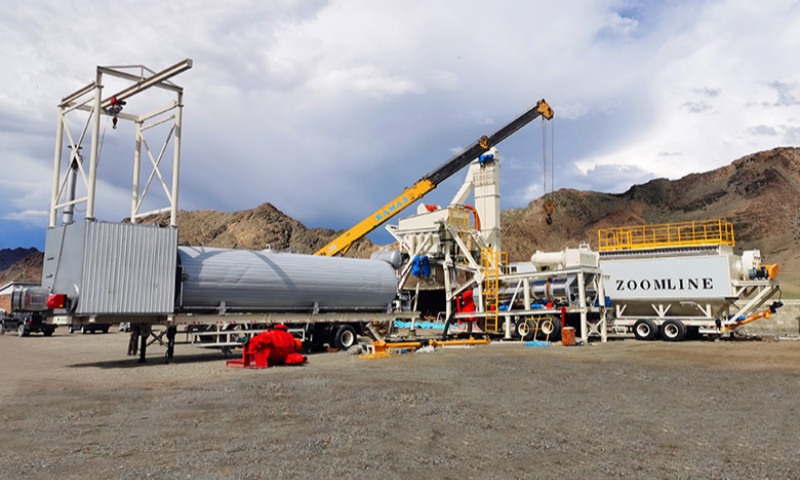
Basic Elements of Asphalt Plant Site Selection
Throughout its operations, an asphalt mixing plant relies not only on water but also on electricity, and roads must remain accessible at all times. These three basic elements are indispensable when constructing an asphalt mixing plant. Without a water source, the production and processing of asphalt concrete cannot proceed; similarly, if electricity must be sourced from a distant location, investment costs will significantly increase; if roads are not accessible, constructing roads would also increase investment costs. Therefore, when selecting a site for an asphalt mixing plant, these key elements must be considered, and none can be overlooked.
Key Factors to Consider When Choosing the Site For an Asphalt Mixing Plant
1. Economic Factors
- Transportation costs: The primary product of an asphalt mixing plant is asphalt mixture, which must be transported to road construction sites. The site should be located near the main construction area to minimize transportation distances and reduce costs. Transportation costs are not only related to distance but also to the condition of the roads along the route. For example, if the transportation route is frequently congested, it will increase transportation time and fuel consumption, thereby raising costs. Additionally, if the site is near major transportation arteries such as highways or railways, its efficient transportation capacity can be leveraged to reduce transportation costs. In the asphalt industry, for instance, the closure of critical aggregate quarries can increase the transportation distance for aggregates, leading to a significant rise in transportation costs, and some asphalt mixing plants may even face closure as a result.
- Raw material procurement costs: Asphalt mixing plants rely on various raw materials, such as aggregates and asphalt. Site selection should prioritize locations near raw material sources to reduce procurement and transportation costs. Raw materials vary in quality and price across different regions, so a comprehensive assessment is necessary. Being close to high-quality aggregate sources ensures material quality while minimizing transportation losses and costs. Additionally, the stability of raw material supply is critical; a long-term stable supply must be ensured to avoid production interruptions due to shortages.
- Land Costs: Land costs constitute a significant expenditure in asphalt mixing plant construction. When selecting a site, compare land prices across different regions and choose a plot that is reasonably priced and meets project scale requirements. Land prices vary greatly by location; land near city centers or transportation hubs is expensive, while land in remote areas is relatively inexpensive. However, remote areas may face issues such as poor transportation and inadequate infrastructure, so a comprehensive assessment is necessary.
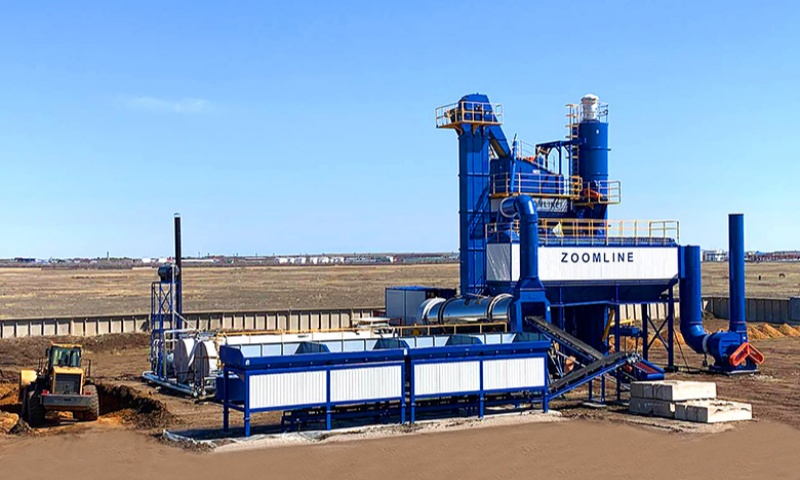
2. Transportation Factors
- Accessibility: The selection of an asphalt mixing plant site must ensure excellent transportation accessibility, establishing efficient access routes for raw material and finished product transport vehicles. Prioritize areas adjacent to major transportation arteries such as highways and national roads, which can significantly improve transportation efficiency and drastically reduce transportation time. Conversely, if the site is located in a traffic-congested area, transportation vehicles will frequently encounter delays, which not only increase transportation costs and extend transportation cycles but also severely impact the overall production schedule of the mixing plant.
- Transportation Convenience: In addition to road conditions, the completeness of surrounding transportation supporting facilities is equally critical. Special attention should be given to whether there are dedicated parking lots suitable for transportation vehicles and whether there are scientifically planned, functionally complete cargo loading and unloading areas. Excellent transportation convenience can effectively accelerate vehicle turnover efficiency, optimize operational cost control, and provide strong support for the stable operation of the mixing plant.
3. Engineering Factors
- Site Conditions: Site selection should prioritize flat terrain and open views, which not only significantly reduce site leveling costs but also lay the foundation for the scientific layout and efficient construction of the asphalt mixing plant. Uneven terrain can lead to equipment installation deviations, affecting operational stability and even posing safety hazards. Additionally, site area planning should be forward-thinking, not only meeting current production scale requirements but also reserving sufficient expansion space for raw material storage areas, equipment parking zones, and office and living facilities.
- Foundation conditions: Given the high density of heavy equipment within an asphalt mixing plant, the foundation’s bearing capacity must meet extremely stringent requirements. During the site selection phase, professional institutions must be commissioned to conduct detailed geological surveys to ensure the foundation is stable and robust, capable of withstanding both dynamic and static loads generated by equipment operation over the long term. If insufficient foundation bearing capacity leads to settlement issues, it not only causes structural damage to equipment but may also trigger severe production safety accidents.
4. Material Yard Factors
- Raw Material Storage and Management: Asphalt mixing plants must be equipped with sufficient raw material storage space. During site selection, it is essential to assess whether the surrounding area has the conditions to construct a dedicated material yard. The material yard must have a well-designed drainage system and good ventilation to prevent moisture from degrading raw material performance, which could affect final product quality. Taking aggregate storage as an example, proper drainage facilities can effectively prevent issues such as strength degradation and gradation imbalance caused by prolonged water exposure.
- Scientific Layout Planning of the Material Yard: The layout of the material yard must be deeply integrated with the production process of the asphalt mixing plant to enhance production efficiency by optimizing raw material access paths. It is recommended to implement zoned storage management based on aggregate specifications to ensure precise and efficient retrieval of corresponding materials during production, thereby reducing time losses from material allocation.

5. Natural Environmental Factors
- Climate conditions: Climate factors play a decisive role in the entire production cycle of an asphalt mixing plant. In high-temperature regions, it is essential to configure efficient cooling systems and monitor asphalt mixture temperatures in real time to prevent issues such as premature asphalt aging and deterioration of mixture performance caused by prolonged high temperatures. In cold regions, it is necessary to establish a comprehensive insulation system and implement freeze protection measures for critical equipment and conveying pipelines to prevent production stoppages caused by equipment freezing. Additionally, extreme weather conditions such as heavy rain and strong winds can disrupt normal production processes and affect the efficiency of finished product transportation. When selecting a site, it is essential to systematically analyze local climate data and develop targeted protective measures.
- Topography: Site selection must strictly avoid areas prone to natural disasters, including flood-prone zones, geological landslide zones, and seismic fault zones. These areas harbor significant safety hazards, and in the event of a disaster, they can easily result in equipment damage, personnel injuries, and production chain disruptions. If site selection is required in mountainous areas, professional institutions must be commissioned to conduct scientific assessments of mountain stability, and reinforcement and protective measures must be implemented to ensure that the mixing plant is not at risk of being buried by landslides due to geological changes.
6. Social and Environmental Factors
- Policy Compliance: Site selection must strictly align with local land use master plans and environmental protection policies, clearly define the planning attributes of industrial land use, and ensure the legality and compliance of site construction qualifications. Prioritize compliance with mandatory standards for emissions of pollutants such as exhaust gases, wastewater, and solid waste to avoid risks such as administrative penalties or production suspensions due to environmental non-compliance.
- Environmental Sensitivity Control: Given the noise and dust pollution generated during the operation of asphalt mixing plants, priority should be given to avoiding environmentally sensitive areas such as residential areas, educational institutions, and medical facilities. If site selection constraints prevent avoidance, efficient soundproofing and noise reduction devices, intelligent dust removal systems, and other pollution control facilities should be planned and installed simultaneously to establish a comprehensive environmental impact mitigation mechanism.
Process of Site Selection for Asphalt Mixing Plant
During the site selection decision-making process, the following steps are recommended: First, use satellite maps for preliminary screening to exclude sensitive areas and identify transportation hubs and potential sites; second, conduct on-site inspections to comprehensively assess geological conditions, measure baseline noise levels, and evaluate the acceptance level of surrounding residents; third, compare multiple options and use tools such as transportation cost models to assist decision-making; finally, do not overlook the risk assessment phase, and develop contingency plans for potential risks such as environmental complaints and transportation restrictions.
Common Mistakes to Avoid in Asphalt Mixing Plant Site Selection
1. Neglecting Transportation Convenience
If the mixing plant is too far from the construction site, it will significantly increase the transportation distance for asphalt mixtures. This not only increases fuel consumption for transportation vehicles but also leads to higher vehicle wear and maintenance costs, ultimately resulting in significantly higher transportation costs. Additionally, longer transportation distances prolong the dwell time of asphalt mixtures during transportation, causing a significant drop in temperature. When temperatures fall below a certain standard, it affects the paving and compaction performance of the mixture, reducing pavement quality and service life. Research indicates that for every 10°C decrease in temperature during transportation, the compaction density of the asphalt mixture may decrease by 2%–3%.
2. Insufficient Consideration of Site Conditions
If the selected site has insufficient foundation bearing capacity, the mixing plant equipment may experience foundation settlement after installation and operation. This can cause the equipment foundation to tilt, affecting normal operation and potentially leading to safety incidents. For example, a mixing plant located in a backfilled soil area experienced severe tilting of the equipment after one year of operation due to inadequate foundation treatment, resulting in high maintenance costs. If the site is too low-lying or has poor drainage, water accumulation issues may arise during the rainy season. Water accumulation not only affects the normal production and operation of the mixing plant but may also submerge raw materials, affecting their quality. Additionally, prolonged water accumulation may corrode the equipment foundation and electrical equipment, shortening the equipment’s service life.
3. Neglecting Raw Material Supply
If the mixing plant is too far from major raw material suppliers or there is insufficient raw material supply in the surrounding area, it may lead to raw material supply disruptions. For example, when raw materials such as sand and gravel are sourced from locations far from the mixing plant and transportation routes are blocked, raw materials may not be supplied in a timely manner, causing production to stall. Additionally, longer transportation distances for raw materials increase transportation costs, thereby raising the production costs of asphalt mixtures.
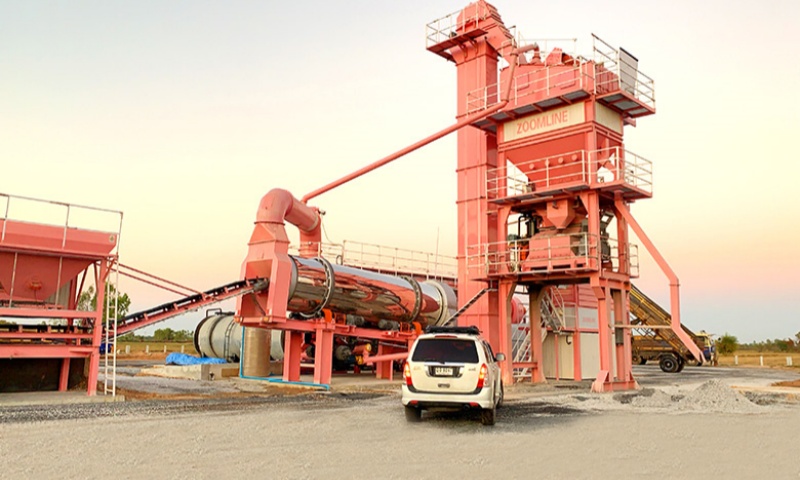
4. Failure to Prioritize Environmental Protection Requirements
If the mixing plant is located too close to environmentally sensitive areas such as residential areas, schools, or hospitals, pollutants generated during production, such as dust and noise, may severely impact the lives and health of nearby residents. For example, dust emissions from the mixing plant may degrade air quality in surrounding areas, leading to respiratory illnesses among residents; noise pollution may disrupt residents’ normal rest and study. As environmental standards become increasingly stringent, selecting a site that does not meet environmental standards may result in the inability to obtain environmental permits, preventing the mixing plant from being constructed and operated normally. For example, selecting a site near an ecological protection area or a water source area makes it virtually impossible to obtain an environmental permit.
5. Failure to Consider Water and Electricity Supply
Asphalt mixing plant equipment has high power requirements. If the selected site has unstable or insufficient power supply, it may result in equipment malfunction, affecting production efficiency. For example, in some remote areas, power supply may not meet the peak electricity demand of the mixing plant, and frequent power outages could cause production interruptions. Mixing plants require a large amount of water for equipment cleaning, material mixing, and other processes. If the selected site has scarce water resources or inconvenient water access, it may increase water costs and even affect normal production. For example, in arid regions or areas far from water sources, deep wells may need to be drilled or water transported over long distances, resulting in extremely high costs.
6. Failure to Consider Long-term Development
If sufficient development space is not reserved during site selection, the plant may be unable to expand as business grows and equipment is upgraded, thereby limiting the company’s growth. For example, if the company plans to add new production lines in the future but there is no available land around the site, expansion will not be feasible. If local urban planning and policy changes are not monitored, the selected area may face new development plans in the future, such as road widening or industrial park construction, forcing the plant to relocate and causing significant economic losses.
Conclusion
In summary, the selection of a site for an asphalt mixing plant requires comprehensive consideration of various factors, including basic elements, economic factors, transportation factors, engineering factors, material yard factors, natural environmental factors, and social and environmental factors, while adhering to a scientific site selection process to avoid common mistakes. Only through careful site selection can the smooth operation of the asphalt mixing plant be ensured, construction quality improved, costs reduced, and the company’s long-term development promoted.

